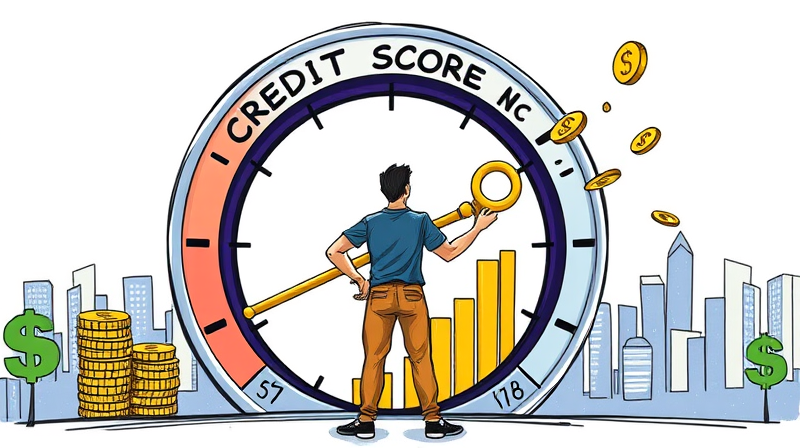
Whether you’re just starting your financial journey or well on your way to early retirement, understanding taxes can be empowering rather than intimidating. By adopting simple, consumer-friendly strategies and staying abreast of 2025 changes, you can maximize your available deductions and credits and keep more of what you earn.
In this guide, you’ll discover actionable tips, from retirement contributions to itemized deductions, that can transform your tax season into a wealth-building opportunity. Let’s dive into the essentials of planning smarter, not harder, for a financially confident future.
With looming changes on the horizon, waiting until filing deadline season is too late. A little planning each quarter can accumulate significant savings, turning tax preparation into a proactive exercise rather than a scramble for paperwork.
At the heart of every successful tax strategy lies financial literacy. Cultivating a deep understanding of how taxes fit into your broader money management plan can be the difference between breaking even and boosting your savings. Research shows that individuals with clear financial vision and objectives are up to 42% more likely to achieve their goals.
Tax planning is not about trickery or loopholes; it’s about proactive, year-round decision-making. By mapping out your income, expenses, and potential deductions well before April, you create a roadmap that guides investments, charitable giving, and retirement planning in the most efficient way.
The 2025 inflation adjustments have widened tax brackets, meaning more of your income could be taxed at lower rates. At the same time, the standard deduction has increased to help shield a larger portion of your earnings.
Remember that your marginal tax rate applies only to income within each bracket, not your total earnings. Your effective rate—the real percentage of your income paid in taxes—will always be lower. Understanding these distinctions lets you make “what-if” calculations when deciding to accelerate income or defer expenses.
Choosing between the standard deduction and itemizing hinges on your unique expenses. If state and local taxes, mortgage interest, charitable gifts, or medical costs exceed the new thresholds, itemizing can yield greater savings. Consider “bunching” deductions—like doubling charitable contributions every other year—to surpass the standard limit.
Understanding the difference between deductions (which trim taxable income) and credits (which reduce taxes owed dollar-for-dollar) is essential. Credits such as the Child Tax Credit or Earned Income Tax Credit can maximize after-tax income through thoughtful planning.
Retirement accounts remain a cornerstone of tax strategy. Under the Secure 2.0 Act, 2025 contribution limits rise to $23,500 for a traditional 401(k), with catch-up contributions of $7,500 once you reach 50, and an even larger boost to $11,250 for those aged 60 to 63. These contributions reduce your taxable income in the year you invest.
For example, a 55-year-old contributing the full $31,000 catch-up amount could lower their taxable income by tens of thousands, potentially pushing them into a lower bracket. Likewise, evaluating whether a Roth conversion is sensible depends on your expected tax bracket in retirement compared to today’s rates.
Health Savings Accounts (HSAs) offer a powerful triple tax benefit: pre-tax contributions, tax-free growth, and tax-free qualified withdrawals for medical expenses. If you have a high-deductible health plan, maximizing HSA contributions is one of the most powerful, long-term savings strategies available.
Whether you’re funding a retirement account or an HSA, consistency is key. Regular deposits throughout the year can harness market dips and keep you on track.
The average IRS refund in 2024 was $3,050. Instead of viewing this windfall as a spending spree, allocate it strategically to build lasting wealth.
In your investment portfolio, intelligent use of tax-loss harvesting can offset gains by selling underperforming assets at a loss, reducing your capital gains tax liability. Similarly, donating appreciated assets held for more than a year to charity lets you deduct their fair market value without paying capital gains taxes.
It’s also wise to review your investment performance mid-year. Selling losing positions before year-end deadlines allows you to offset capital gains, and reinvesting the proceeds can realign your portfolio with your risk tolerance and long-term objectives.
Many provisions of the 2017 Tax Cuts and Jobs Act expire after 2025. Anticipated rate hikes, credit adjustments, and deduction changes could reshape your planning landscape. By maintaining ongoing monitoring of legislative developments, you can make preemptive moves—such as accelerating deductions or deferring income—to optimize your position before new rules kick in.
Potential changes include expiration of lower individual rates, reduced limits on itemized deductions, and adjustments to business tax credits. High earners should model scenarios under the old and new laws to decide whether to accelerate income into 2025 or delay certain transactions.
Effective tax planning extends beyond April. Adopting a solid budgeting framework—whether the 50/20/30 or 70/20/10 rule—ensures you have room for taxes, savings, and spending. These guidelines help you anticipate tax liabilities and avoid surprises.
Daily spending choices, like prepaying state property taxes or timing charitable gifts, can inch you closer to threshold benefits. Paired with envelope systems or budgeting apps, you gain real-time visibility into how your decisions affect your eventual tax bill.
The IRS offers free filing services and online calculators, ensuring accessibility for all taxpayers, including those with disabilities or language barriers. From simple forms to interactive guides, these resources can demystify complex calculations.
Community resources, such as Volunteer Income Tax Assistance (VITA) and Tax Counseling for the Elderly (TCE), provide free help to qualifying individuals. Local libraries and community centers often host tax workshops, making expert guidance more accessible.
Armed with a clear understanding of bracket adjustments, deduction thresholds, and retirement incentives, you can confidently navigate tax season. Remember to plan throughout the year, leverage available credits, and harness strategic tools like refund allocation and tax-loss harvesting. Ultimately, staying proactive, informed, and disciplined turns tax filing from a chore into an ongoing opportunity for financial growth.
Embrace tax planning as a continuous journey, not a once-a-year task. With the right mindset, clear goals, and supportive resources, you can foster financial resilience and enjoy stress-free returns year after year.
References













